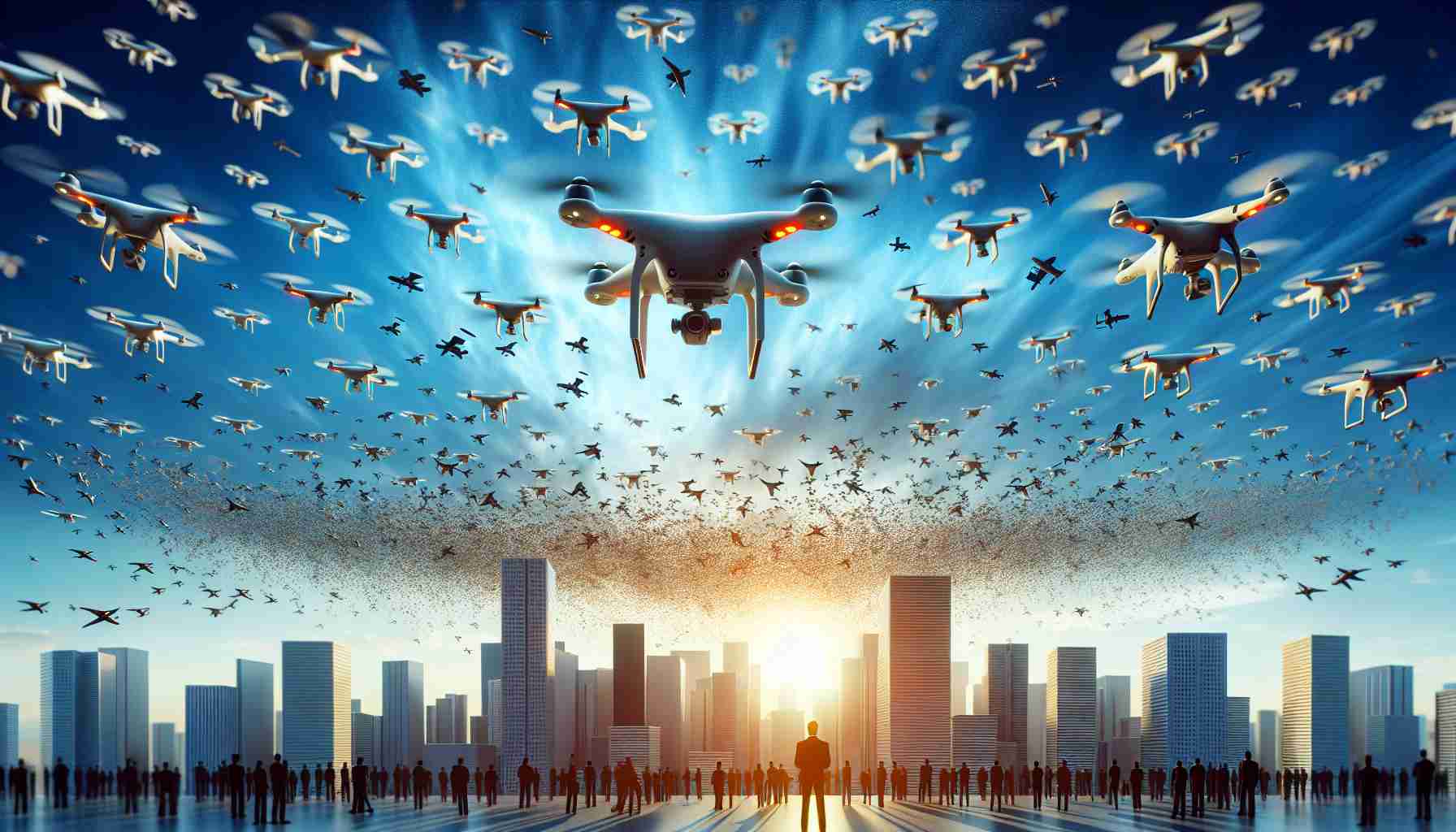- Mysterious drone sightings have caused widespread concern across the U.S., particularly near strategic locations like major airports and military bases.
- The Federal Aviation Administration (FAA) is actively involved in documenting these sightings and enhancing airspace security.
- Authorities are concerned about potential espionage and operational disruptions, prompting the development of advanced drone detection technologies.
- The anti-drone solutions market is projected to grow by 20% annually as global demand for defense against drones increases.
- The FAA is considering stricter regulations, including mandatory real-time geofencing and traceability to mitigate risks.
- Discussions on balancing drone technology innovation and national security continue, highlighting the ongoing importance of regulation.
In recent weeks, a mysterious wave of drone sightings has swept across the skies of the United States, leaving both citizens and officials on edge. With sleek machines buzzing unsettlingly close to strategic locations like Stewart International Airport and Wright-Patterson Air Force Base, the nation has been thrust into a state of high alert. This phenomenon has triggered an urgent response from federal and state agencies, all racing to decode the purpose behind these aerial visitors and assess potential security risks.
The Federal Aviation Administration (FAA) has been at the forefront, diligently documenting these curious sightings across six states, including tightly controlled airspace around critical sites like the Picatinny Arsenal. Alarm has sounded over the drones’ potential for espionage or operational disruption—a reality that has pushed authorities to tighten airspace security and develop cutting-edge drone detection technologies.
Amidst this drone dilemma, the demand for innovative anti-drone solutions is predicted to skyrocket. Analysts forecast a 20% annual growth in the sector as entities worldwide scramble to fortify their defenses against these stealthy intruders. Meanwhile, the FAA is swiftly moving toward more stringent regulations, envisaging mandatory real-time geofencing and enhanced traceability for drone operators to preemptively curb risks.
Every Friday, the vibrant Marcelo Zurita hosts Olhar Espacial, where renowned astronomer Ary Martins delves into the enigma of these aerial encounters. This ongoing dialogue raises questions about the delicate balance between embracing drone technology and ensuring national safety, highlighting an urgent call for regulations that both foster innovation and safeguard public security. As experts continue to unlock the secrets of the skies, one thing is clear: this airborne intrigue is far from over.
Are Mysterious Drone Sightings the New Frontier in National Security Threats?
Drone Sightings: A Rising Challenge in the Skies
In recent weeks, mysterious drone sightings across the United States have put citizens and officials on high alert. These drones, flying unsettlingly close to strategic sites like Stewart International Airport and Wright-Patterson Air Force Base, pose potential security risks and raise the question: what are their true intentions?
Key Questions
1. What Security Measures Are Being Implemented to Counteract Rogue Drones?
The Federal Aviation Administration (FAA) is spearheading efforts to address these incursions by documenting sightings and collaborating with federal and state agencies. The focus is primarily on developing anti-drone technologies, bolstering airspace security, and implementing real-time geofencing and enhanced traceability for drone operators. These measures aim to curb potential espionage and operational disruptions.
2. What Are the Market Projections for Anti-Drone Technologies?
The demand for anti-drone solutions is expected to grow significantly, with market analysts forecasting a 20% annual growth rate. This sector expansion reflects an increasing global effort to fortify defenses against drone-related threats. Entities are investing in innovative solutions to detect and neutralize unauthorized drone activities, paving the way for advancements in this field.
3. How Are Experts Balancing Innovation with Public Security in Drone Technology?
The ongoing discussion led by figures like Marcelo Zurita and astronomer Ary Martins in programs like Olhar Espacial focuses on finding a balanced approach. Experts emphasize the need for regulations that not only promote the technological progress of drones but also ensure the safety and security of the public. This balance is crucial as drone technology continues to evolve, blending civilian applications with the potential for misuse.
Industry Insights and Future Predictions
– Innovations in Detection: Cutting-edge technologies are being developed to enhance drone detection capabilities, involving sophisticated radar systems and AI-driven identification methods.
– Regulatory Trends: The FAA’s move towards stricter regulations, such as mandatory geofencing, suggests an impending overhaul of drone operation laws to preclude security breaches.
– Security Aspects: Efforts are intensifying to integrate drones into national security strategies, necessitating robust frameworks that address both technological and operational challenges.
Relevant Links
– Federal Aviation Administration (FAA)
– DJI, Leading Drone Manufacturer
As experts and entities strive to decode the enigma of these drone sightings, the dialogue surrounding drone technology and national security becomes ever more crucial. The future promises a landscape where technological innovation and public safety are harmoniously aligned, guarding the skies and securing the public’s trust.



















